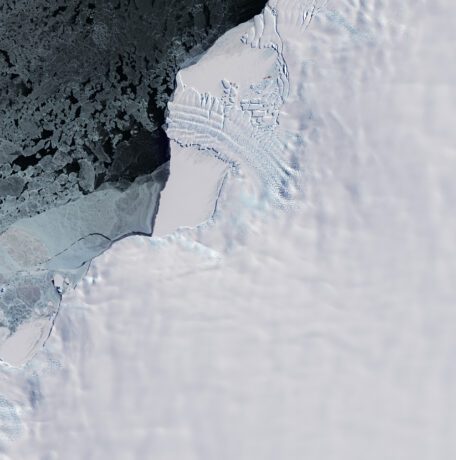 This Copernicus Sentinel-2 image features the ice tongue of the Dawson-Lambton Glacier in Antarctica, which lies southwest of the Brunt Ice Shelf in the Weddell Sea sector of the continent. This image was captured in October 2023, but compared to images from October 2022, the seasonal sea ice around the glacier is much decreased.
This Copernicus Sentinel-2 image features the ice tongue of the Dawson-Lambton Glacier in Antarctica, which lies southwest of the Brunt Ice Shelf in the Weddell Sea sector of the continent. This image was captured in October 2023, but compared to images from October 2022, the seasonal sea ice around the glacier is much decreased.
Patterns on and around the glacier depict crevasses and rumples, resulting from pressure as the glacier slides towards the sea. Over the past decades, glaciologists have used satellite data to monitor the glacier’s retreat.
As well as climate issues related to the demise of ice, changes in this region have also raised concerns because this area is home to the long-established colony of Dawson-Lambton emperor penguins. To breed, they need patches of sea ice that remain intact from April until December. However, their habitat is at risk because warming waters are melting the sea ice. Also, a calving event in January 2023 raised fears that the penguins might not return to the glacier.
Although studying and identifying penguin colonies is difficult owing to the remoteness of Antarctica, satellite imagery can been used to track penguin guano, which can be spotted on the ice here thanks to the 10-meter pixel resolution offered by Copernicus Sentinel-2. Black stains can be seen on the sea ice some 50 kilometers north of the Dawson-Lambton Glacier, implying the presence of thousands of penguins.
Image Credit: Contains modified Copernicus Sentinel data (2023), processed by ESA

